USGS : New Topobathymetric Dataset for Potomac River
Teledyne Geospatial said the U.S. Geological Survey (USGS) and Dewberry, a privately held professional services firm, published a new topobathymetric lidar dataset for the Potomac River.
The Potomac River flows from the Potomac Highlands in West Virginia to the Chesapeake Bay in Maryland. The lidar survey was conducted for USGS’s 3D Elevation Program (3DEP), with stakeholders including the USGS Earth Resources Observation and Science Center (EROS), National Geospatial Program (NGP), and Eastern Ecological Science Center (EESC) programs, as well as the Interstate Commission on the Potomac River (ICPRB).
Using their Teledyne Optech CZMIL SuperNova lidar system Dewberry surveyed 55 miles of the Potomac River from Hancock, MD down to Shepherdstown, WV, acquiring a total of 12.5 square miles of submerged topobathymetric lidar data. The project deliverables included a 3D point cloud and seamless topobathymetric Digital Elevation Models (DEMs) for that section of the river. This was the 2nd Potomac River project, with the first extending from Shepherdstown, WV to the Little Falls dam near Washington, D.C. It is expected that these maps will provide a much-needed tool to predict the presence and movement of oil spills in the Potomac River and support ICPRB’s mission to protect and enhance the waters and related resources of the Potomac River basin through science, regional cooperation, and education.
“Given the depths, water conditions, and bottom substrate of the Potomac River, we were hopeful we’d get bottom returns with the enhanced CZMIL SuperNova system and couldn’t have been happier with the level of complete, seamless coverage achieved,” said Emily Klipp, Dewberry senior associate and senior project manager.
The project required an aggregate nominal point density (ANPD) of 1.5 points/m2 in shallow water (~1.5x secchi depth). The survey was able to exceed this specification and deliver 6.25 points/m2. The topographic portion of this dataset was tested to meet ASPRS Positional Accuracy Standards for Digital Geospatial Data (2014) for a 10 cm RMSEz Vertical Accuracy Class. Actual non-vegetated vertical accuracy was found to be 8.8 cm (RMSEz). The bathymetric vertical accuracy was found to be 6.1 cm (RMSEz), equating to ± 12.0 cm at 95% confidence level.
“I am very pleased to see the CZMIL SuperNova take on another challenging riverine environment mapping its banks and bed with such high detail. Congratulations to Dewberry for this great success in topo-bathymetric data production!” commented Malek Singer, Airborne Product Manager, Teledyne Geospatial.


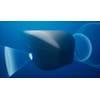
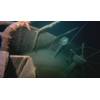

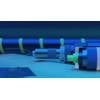
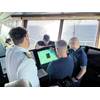
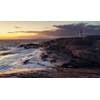






 December 2025
December 2025



